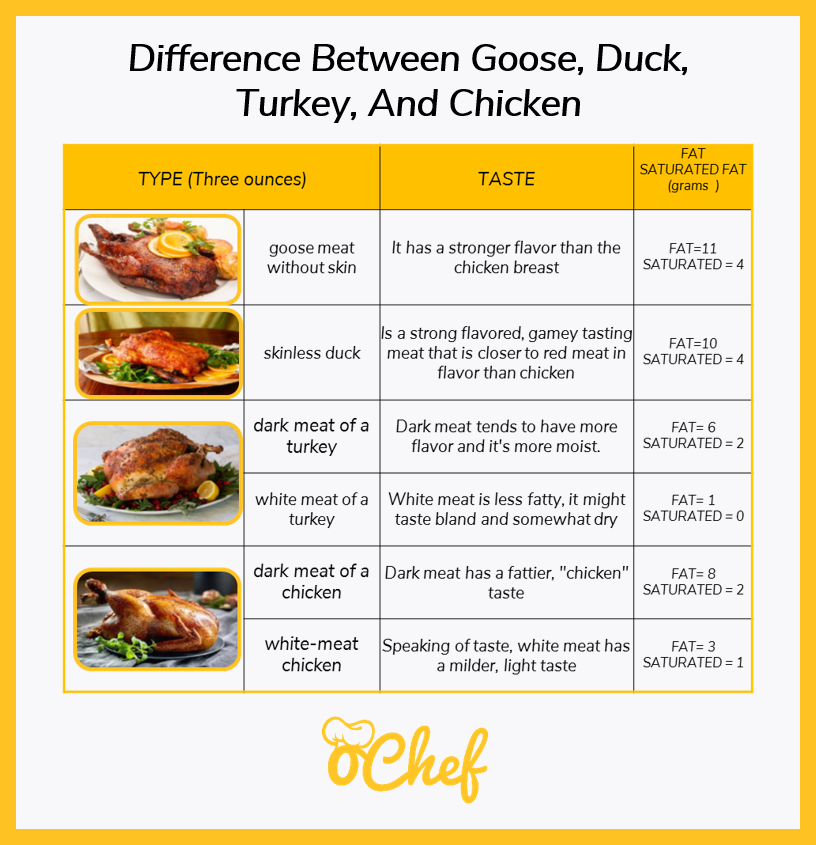First of all, let’s not disparage duck. You should cook it in such a way that much of the fat is rendered out. The skin should be pricked all over so that the fat melts as it cooks and settles in the bottom of the pan. For that reason, you should always cook duck on a rack so that it doesn’t fry in its own fat.
Goose is a wonderful bird to roast for the holidays, with delicious flavor and, like duck, all dark meat. Also like duck, it has a layer of fat beneath the skin, so you take the same steps to get rid of it. And as with any poultry, eating the skin dramatically increases the fat you consume.
Three ounces of goose meat without skin contains 11 grams of fat, 4 of which are saturated. The same amount of skinless duck contains 10 grams of fat, with 4 saturated. By comparison, the dark meat of a turkey contains 6 grams (2 saturated), while the dark meat of a chicken has 8 grams of fat (2 saturated). A 3-ounce portion of the white meat of a turkey has only 1 gram of fat (0 saturated), while the same portion of white-meat chicken has 3 grams of fat, (1 saturated). In general, the consumption of skin doubles or more than doubles the fat content of poultry.

We don’t think you’re going to win with the goose-is-similar-to-turkey argument. We’d go with the goose-is-really-delicious and it’s-just-a-once-a-year-treat argument. And anyone who has ever eaten overcooked, dried-out turkey breast (and that includes most of us) should be quite receptive to the moist, flavorful meat of a goose.
And while it may not help your cause at all, saving the goose fat to use for roasting or frying potatoes will give you a whole new appreciation for potatoes. And there, too, it’s a once-a-year thing.
Taste difference between goose and turkey
Frying with goose and duck fat
Related Recipes: The Classic Roast Goose Alsatian Roast Goose How to brine a goose





















![Can you Cook Eggs in the Microwave? [Complete Guide]](/assets/images/c1f79d1cad59f18f9b5dc31403bd0eb2.png)
















